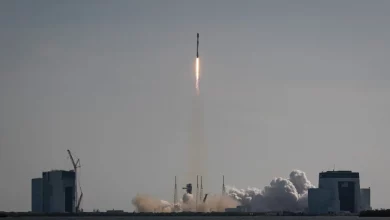A space oddity: Small exoplanet challenges existing theories on planet formation

A research team led by Lund University in Sweden has discovered a small planet that displays peculiar orbital motion. The shimmying planet, located 455 light-years from Earth, shows that planetary systems can be considerably more complex than researchers have previously thought.
The newly discovered planet TOI-1408c has a mass equivalent to eight Earths and circles very close to a larger planet, the hot gas giant TOI-1408b. After starting to study both planets and their star, TOI-1408, in detail, the researchers felt puzzled. The small planet has a very peculiar orbital motion. The interactions between the two planets and their star can be likened to a rhythmic dance.
“The small planet exhibits very unusual orbital behavior and shows considerable variations regarding the time when it passes in front of its star, which is something that we don’t see as a rule. The small planet’s existence challenges existing theories on the formation and stability of planetary systems,” says Judith Korth, astrophysicist at Lund University and leader of the study.
The new study, published in The Astrophysical Journal Letters, shows that planetary systems can be considerably more complex than researchers have previously thought.
The discovery of a small planet between a star and a gas giant is rare and offers a unique case study for the development of planetary systems. This could help the researchers to understand more about how planets are formed in other solar systems.
“Our results will help researchers to learn more about how planets are formed and how they behave when they are very close to each other, particularly in systems with giant planets,” says Korth.
Exoplanets are planets located in a solar system other than our own. The first confirmed discovery was made in 1995. Since then, more than 5,700 exoplanets have been discovered. The researchers’ discovery of the space oddity TOI-1408c was made possible by using NASA’s Transiting Exoplanet Survey Satellite (TESS). Since TESS was launched in 2018, it has observed more than 7,000 potential exoplanets.
“I hope that our results can be used in future studies to discover even more planets in other systems, but also to better understand the large range of planetary systems that exist in our galaxy,” concludes Korth.





